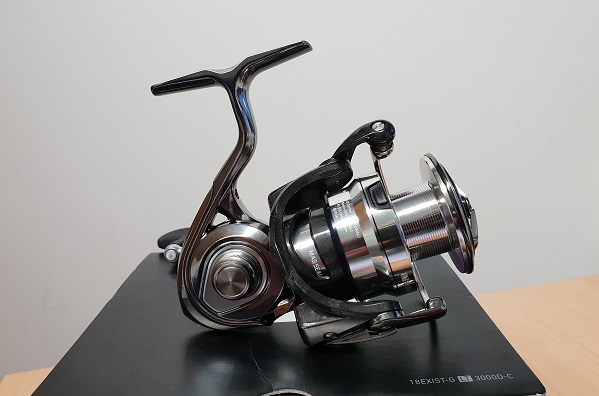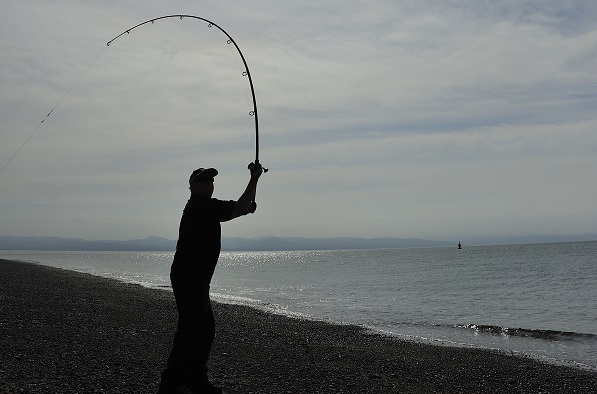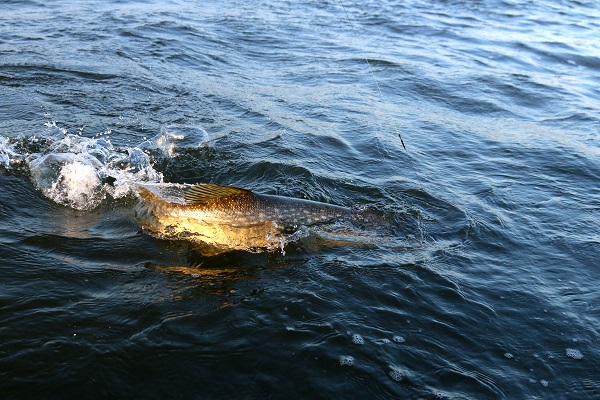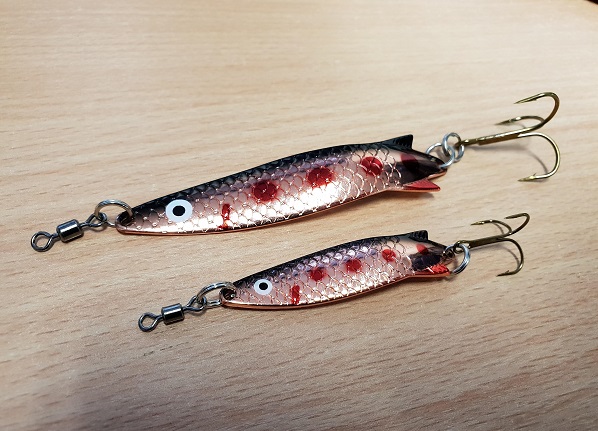
So, do I put braid or mono on my new spinning or multiplier reel?
It’s a conversation we have in-store and online daily here at Angling Active, and there never seems to be one answer.
If experienced, one angler will swear braid is better than monofilament, but the very next just as experienced customer will plead testament that his mono setup beats braid hands down.
Confused – No wonder;
What chance do less experienced anglers have if the pro guys can’t agree? We have to draw on conclusions from the learnings in-store and on the water for ourselves.
We believe braid and mono have properties that lend themselves to differing techniques and disciplines of angling on our UK waters and further afield. Listing our recommendations and findings, some will not agree with them… Hopefully, you will.
Before going into specifics, here are the main obvious differences in braid over mono:
- Braid has less stretch.
- Braid diameter is much thinner for the comparable breaking strains.
- Braids are more tangle prone.
- You can use really strong braid to reduce fish breaking off.
- Braids are more expensive.
- Braid can cut through your finger like cheese wire.
As with every customer that we have looking for advice, we always ask “What are you fishing for and how?”
Below we have listed as many styles of fishing we can think of that we cater to with braid or mono. From there you can make your own informed decisions:
Spiderwire Stealth Smooth 8 Braid
from £12.97from £19.99Berkley Whiplash 8 Braid
from £22.99Rovex Devil Fibre Monofilament Line
from £3.97from £4.99Daiwa Sensor Monofil
from £9.99from £10.99Maxima 100m Chameleon Mono
from £3.75from £3.99PowerPro Braid
from £17.99from £19.99
Spinning for Salmon
Nobody can dispute that a sensitive, low drag and non-stretch line is preferred for Salmon fishing with a lure in a river. Being all of these qualities, braid is the obvious choice for most. The softest takes are felt by the angler due to the line not being able to stretch, and this non-stretch quality boosts the success rate of good hook-ups. Casting distance also benefits from the low diameter braid providing little air resistance or drag, lighter lures are cast easier too as a result. The capacity of your reel is also increased because lb for lb in breaking strain, you will fit allot more braid on a spool than you would mono. If you get into a good fish that wants to head back to the sea, you’ve got plenty of line for peace of mind. We’d recommend a few feet of monofilament or fluorocarbon at the front end of the braid attached with a palomar knot and swivel before the lure as braid is quite visible in the water. Use anything from 30lb or even 40lb breaking strain. This may seem like overkill, but we’d all rather see a fish carefully returned than breaking off with a hook and line hanging out its mouth. Generally this strength of braid will be the same diameter as 10lb monofilament.
Lure fishing for Pike
It has to be said that braid again wins here. The smaller diameter and non-stretch qualities benefit bite detection and spool capacity. The lack of stretch in braid also allows you to impart action into lures such as jerkbaits more effectively, allowing you to get the best from the lure. But the main advantage with braid over mono in Pike lure fishing is its high breaking strain, lower diameter properties. Casting lures excess of 5oz generates a lot of pressure on your line, so heavy reliable lines are paramount. Most lure anglers will use a baitcaster/multiplier set-ups for heavier lures. Overruns are inevitable, thus the reason higher breaking strain braided lines are required. It eliminates or decreases the chances of a crack off which would see the loss of expensive lures.
Deadbait fishing for Pike
This is a difficult decision to make – Most will argue the same as above with lure fishing for Pike, but what has to be considered is the structure that you will be fishing over. Braid is ideal for fishing through weed, silt, mud-based bottoms etc. It also provides superior bite detection thanks to its no stretch properties. However, it’s weakness can be its abrasive properties, so if fishing over rocky structure you might opt for a monofilament/copolymer based line, as it can withstand a bit more abuse in these circumstances. Monofilaments of 15lb minimum are recommended with most pike anglers opting for 18lb-20lb. As a rule of thumb, braided line breaking strains are chosen on diameter rather than breaking strain, this is to help combat its lack of abrasion resistance. Most pike anglers will use 65lb breaking strain, this is the equivalent diameter of 15lb breaking strain monofilament line.
Trolling/Harling
This is yet another style of fishing that is broken down into braid and mono being best for differing reasons. Your choice of what line to use will depend on what the quarry is, what equipment you are using and how fast the lure is moving, and also what angle out the back of the boat your rod is pointing. Most anglers trolling over deeper or a minimal snagging loch bed, even those with outriggers and down riggers will choose mono as their desired line. The reason being there is more forgiving flex in mono, you are moving and the fish is moving potentially in a different direction, you need something other than the short stiff boat rod to absorb the take. Likewise if you have a trolling rod pointed directly out the stern of the boat. If however you are using longer more flexible rods for trolling that are pointed off the gunnels i.e. when harling, then there is allot more absorption to cope with a take. In this instance you can use braid and you will have the added benefit of abrasion resistance more commonly found in on river beds. Give us a call or email us for advice on what breaking strain for what purpose of trolling/harling.
Jigging/Bottom fishing
Hands down, braid is the best for this job. It is all about sensitivity to a bite, and being able to pull a weight that has managed to get wedged in. Additionally, if fishing at serious depths of 600ft or so for Cod/Skate then you want as much line as possible on your spool to get all the way down to them. Most Skate and Cod anglers will use 100lb braid on an 80lb class rod and with a 40-50lb drag setting.
Coastal Spinning & LRF
The worst environment of all fishing disciplines is the barnacle covered, sharp edged rocks covered in bullet-proof kelp and a swell to toy with your abilities. Braid is your best option for casting from the rocks. It will stand being snagged and pulled over barnacles longer than mono. Braid will potentially cut through kelp if you are lucky, whilst mono will simply try to strangle it, and we all know who wins that painful fight. The very moment you manage to dislodge a hard fighting fish from a deep ledge amongst some kelp, you’ll be so grateful you chose braid over mono. Depending on the size of your quarry and the characteristics of where you are fishing, braid of 10-30lb should cover all situations.
Bait fishing/coarse/carp
We are now entering the biggest area of conversation/confrontation whether braid or mono is best. For swimming a maggot or worms, braid seems arguably to be the best option for abrasion resistance and senstivity. Be weary however, many systems especially South of the border have banned braid for the welfare of the fish, and most would say rightly so. It can slice through flesh like a cheese wire and because it is non stretch it will pull hooks through the fishes mouths causing damage. Most fishing braid is coated, but this will not completely remove risk of damage. If a fish were to take and the line snagged and broke, that fish is likely to be stuck there with no escape. Mono provides more stretch and will not pull hooks as easily, and because it can break easier for its diameter and snagged fish should be able to wriggle free easier than that of braid. Most braids will start at 5-6lb breaking strain upwards.
Berkley Whiplash 8 Braid
from £22.99Maxima 100m Ultragreen Monofilament
from £3.69from £4.99Rovex Devil Fibre Monofilament Line
from £3.97from £4.99Daiwa Sensor Monofil
from £9.99from £10.99Maxima 100m Chameleon Mono
from £3.75from £3.99Maxima 100m Clear Monofilament
from £3.79from £3.99
So there are some recommendations of what to use and why. This is a guide and many people will contest or agree with what we have said. To be honest, it all boils down to what feels intuitively right to you, and this will be the correct line option for you.













